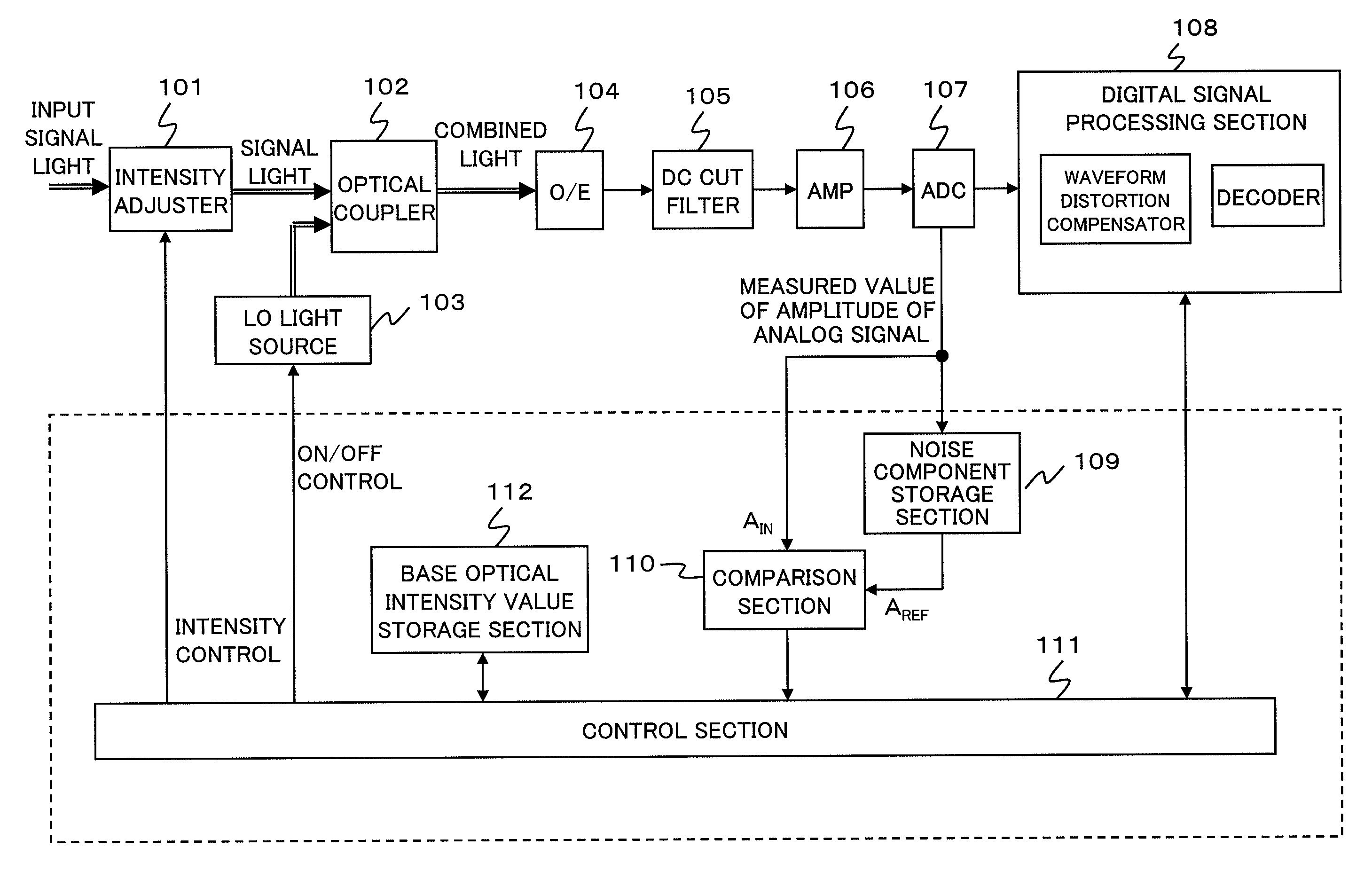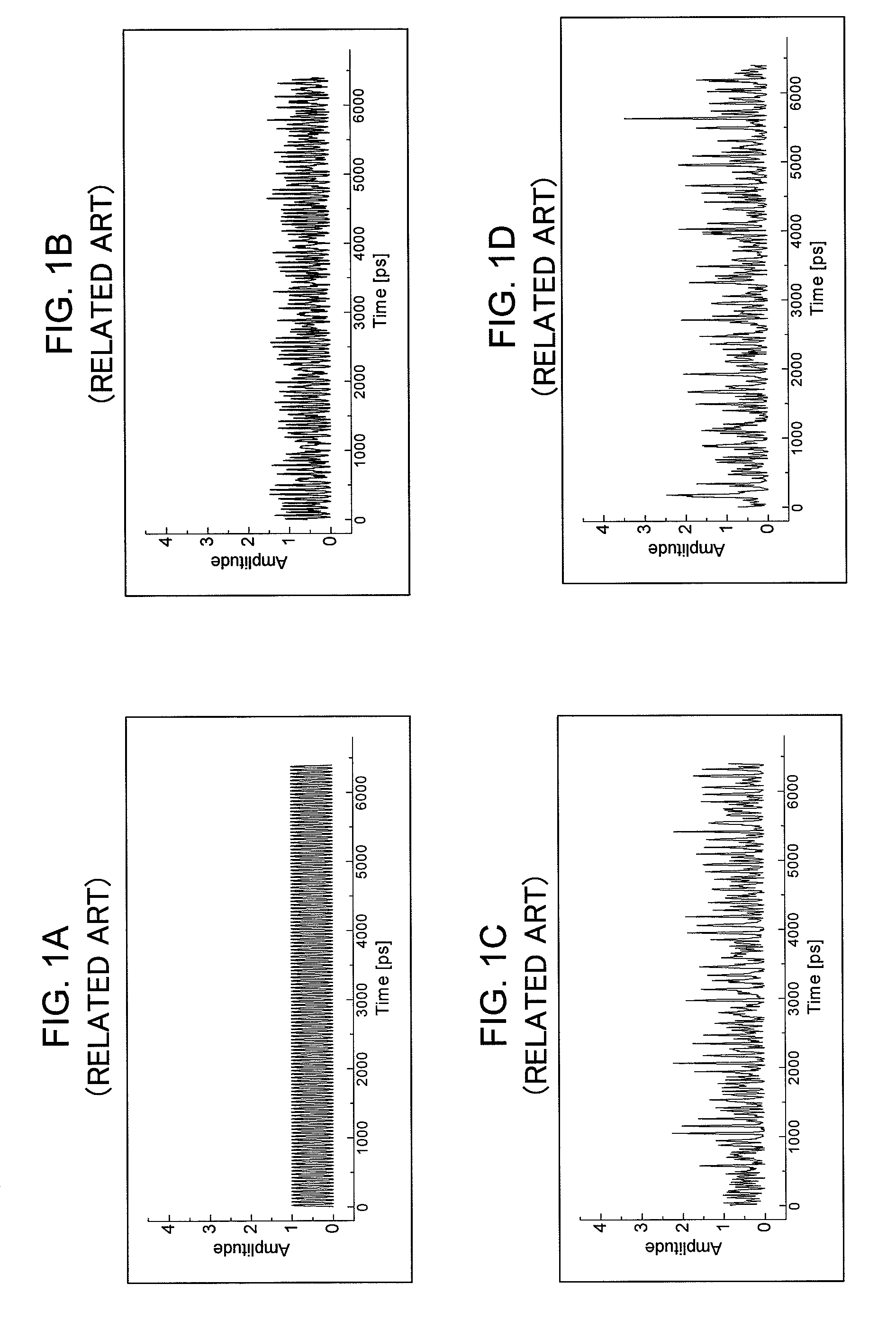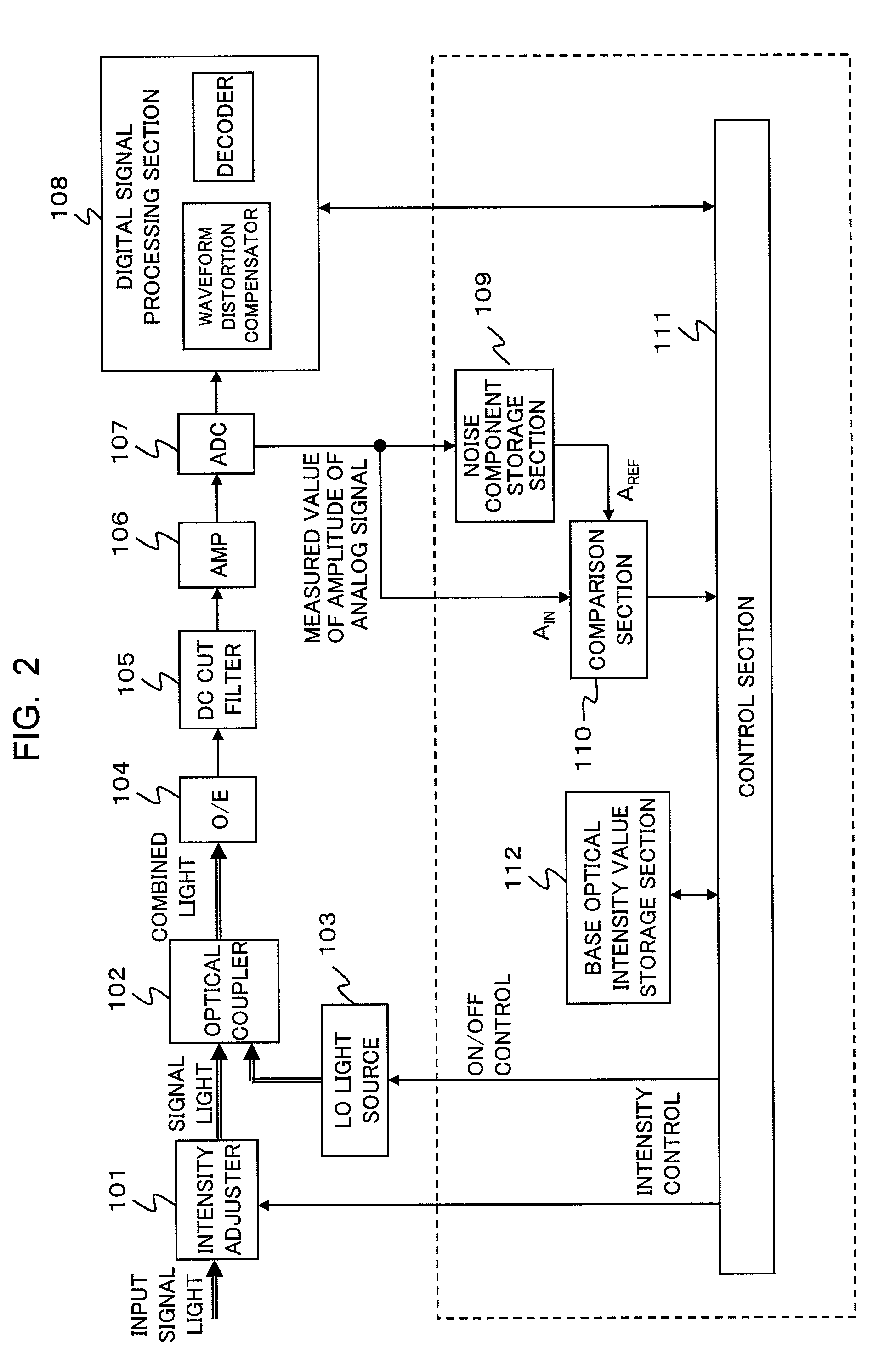Coherent optical receiver and adjustment method thereof
a receiver and coherent technology, applied in optics, electromagnetic transmission, instruments, etc., can solve the problems of insufficient information quantity, inability to provide information on the intensity of signal light, and various distortions of input signal light, and achieve good reception characteristics
- Summary
- Abstract
- Description
- Claims
- Application Information
AI Technical Summary
Benefits of technology
Problems solved by technology
Method used
Image
Examples
Embodiment Construction
1. Structure
[0030]FIG. 2 is a block diagram showing a functional structure of a coherent optical receiver according to an exemplary embodiment of the present invention. An intensity adjuster 101 adjusts the intensity of input signal light that has arrived at the coherent optical receiver after passing through an optical transmission line such as an optical fiber line, and outputs the signal light to an optical coupler 102. The optical coupler 102 combines this signal light with local-oscillator (LO) light input from a LO light source 103 and outputs combined light to an optical-to-electrical (OE) converter 104.
[0031]The OE converter 104 converts the received combined light into an electrical signal and outputs the electrical signal to a direct-current (DC) cut filter 105. After a DC component is removed from this electrical signal by the DC cut filter 105, the electrical signal is amplified by an amplifier 106 and then input to an analog-to-digital (AD) converter 107. The amplifier ...
PUM
| Property | Measurement | Unit |
|---|---|---|
| optical intensity | aaaaa | aaaaa |
| electrical | aaaaa | aaaaa |
| electrically | aaaaa | aaaaa |
Abstract
Description
Claims
Application Information
 Login to View More
Login to View More - R&D
- Intellectual Property
- Life Sciences
- Materials
- Tech Scout
- Unparalleled Data Quality
- Higher Quality Content
- 60% Fewer Hallucinations
Browse by: Latest US Patents, China's latest patents, Technical Efficacy Thesaurus, Application Domain, Technology Topic, Popular Technical Reports.
© 2025 PatSnap. All rights reserved.Legal|Privacy policy|Modern Slavery Act Transparency Statement|Sitemap|About US| Contact US: help@patsnap.com



